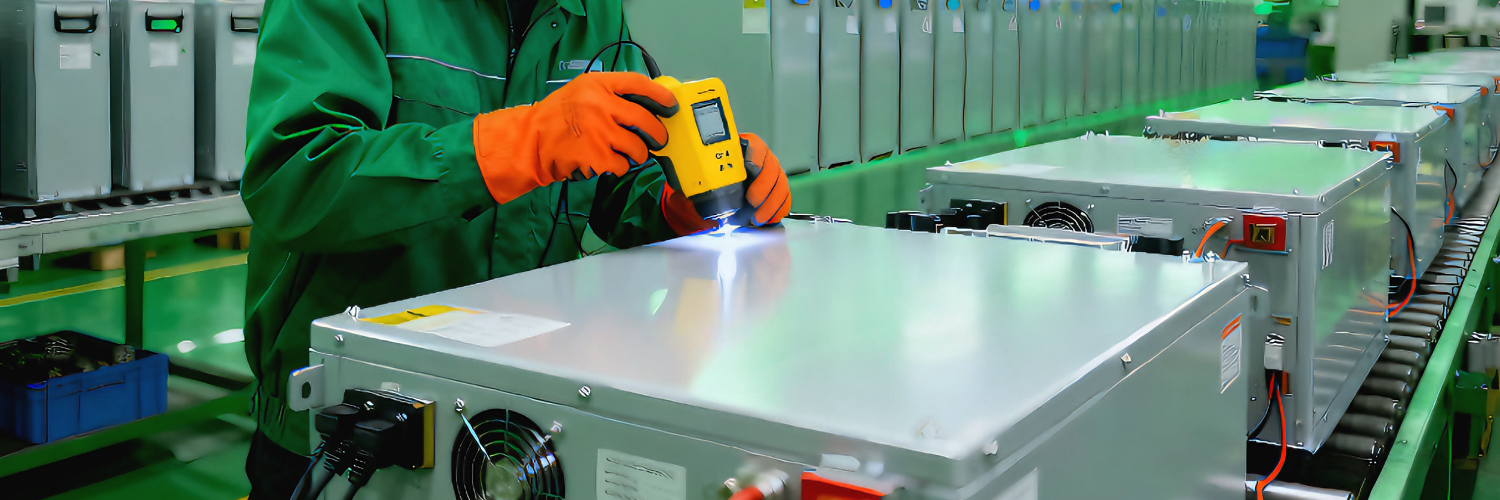Pre-Delivery Testing of Energy Storage Systems: Multi-Layered Checks and Real-Scenario Simulations to Safeguard Every Kilowatt-Hour
Oct.24.2025
Energy storage systems serve as the "reservoir" for energy security, with their reliability directly impacting grid stability, industrial production, and daily electricityuse. To ensure every energy storage device operates "steadily and effectively" in real-world scenarios, a full-process pre-delivery testing protocol—covering everything from components to integrated systems, and from laboratory checks to real-scenario simulations—has become a critical step for enterprises to safeguard product quality. It is not only a "passport" for qualified products but also a solemn commitment to users’ electrical safety.
1. Three Core Objectives: No Compromises on Safety, Performance, or Durability
Pre-delivery testing for energy storage systems always centers on three core goals to ensure products are "free of weaknesses":
- Upholding Safety Bottom Lines: Professional tests identify potential risks such as short circuits, overloads, and leakage. Even in extreme fault scenarios, the system must quickly activate protection mechanisms to ensure the safety of personnel and surrounding equipment.
- Guaranteeing Stable Performance: Key capabilities like charging-discharging efficiency and power output are verified to ensure the device "never lets users down" during daily operations, meeting both industry standards and practical user needs.
- Adapting to Complex Environments: Whether facing extreme temperatures outdoors, vibration interference at industrial sites, or humid and rainy weather, simulation tests ensure the device "stands firm" and avoids performance issues caused by environmental factors.
2. Multi-Layered Full-Process Checks: Leaving No Detail Overlooked from Components to Systems
Building a reliable energy storage system requires "step-by-step" testing—screening at every stage from the source to prevent "faulty operation":
Step 1: Component-Level "Health Checks" to Control Quality at the Source
Core components of energy storage systems—such as the "heart" (battery packs), "brain" (control systems), and "frame" (enclosures)—undergo individual "health checks" before assembly:
- Battery packs undergo repeated charging-discharging cycles to test stability;
- Control systems are evaluated for response speed;
- Enclosures are inspected for protective capabilities.
Only when every component passes inspection can assembly proceed, avoiding "major failures caused by minor flaws" from the start.

Step 2: System-Level "Integration Tuning" to Ensure Seamless Collaboration
Qualified components do not guarantee system compatibility. After assembling all parts into a complete system, "integration tuning tests" are conducted:
- Simulate real usage scenarios for charging-discharging cycles to check if components "work in harmony";
- Test communication smoothness to prevent scheduling delays due to data transmission lags;
- Intentionally simulate faults like grid outages or equipment overloads to verify the system’s ability to "self-rescue" quickly, ensuring it "never fails at critical moments".
Step 3: "Real-Scenario Drills" in Extreme Environments to Validate Reliability
Energy storage systems may be used in scenarios like outdoor power stations, mining sites, and emergency rescue. Thus, "real-scenario simulation tests" are essential to help devices "adapt to the field" in advance:
- Professional equipment simulates extreme temperatures from -30°C to 50°C to test operation in severe cold and heat;
- Vibration and impact during transportation and installation are mimicked to ensure enclosure structural stability and prevent internal component loosening;
- Electromagnetic interference in industrial environments is recreated to avoid device malfunctions caused by external influences.
Only devices that pass these "real-world challenges" can enter the market.
Step 4: Final Calibration and Documentation—Each Device Gets an "ID Card"
After all tests are completed, the device undergoes final calibration to ensure precise performance. A "test file" is created for each unit, recording all results from component to system testing to achieve "traceability for every device". Finally, external appearance and labels are inspected, and accessories are verified as complete—ensuring users can "unbox and use" the device immediately.
3. Beyond-Standard Testing: More Than "Qualified"—Pursuing "Reliable"
Clear industry standards for energy storage testing already exist, but leading enterprises often "raise the bar": extending battery cycle test duration, expanding temperature ranges for environmental simulations. The goal is simple—enhancing real-world reliability. After all, a malfunction in an energy storage system could disrupt grid stability or even cause safety incidents. Every extra test adds an extra layer of protection.
From component "health checks" to system "integration tuning", from laboratory simulations to real-scenario "drills", pre-delivery testing of energy storage systems is a "comprehensive commitment to quality". As the energy storage industry evolves, testing will become smarter and more precise—but the core logic of "multi-layered checks and real-scenario simulations" will remain unchanged. It all boils down to one goal: ensuring every energy storage device safely and stably safeguards every kilowatt-hour of electricity, supporting the energy transition. For users, choosing an energy storage system that has undergone rigorous testing means choosing a "peace of mind" for electrical safety.

